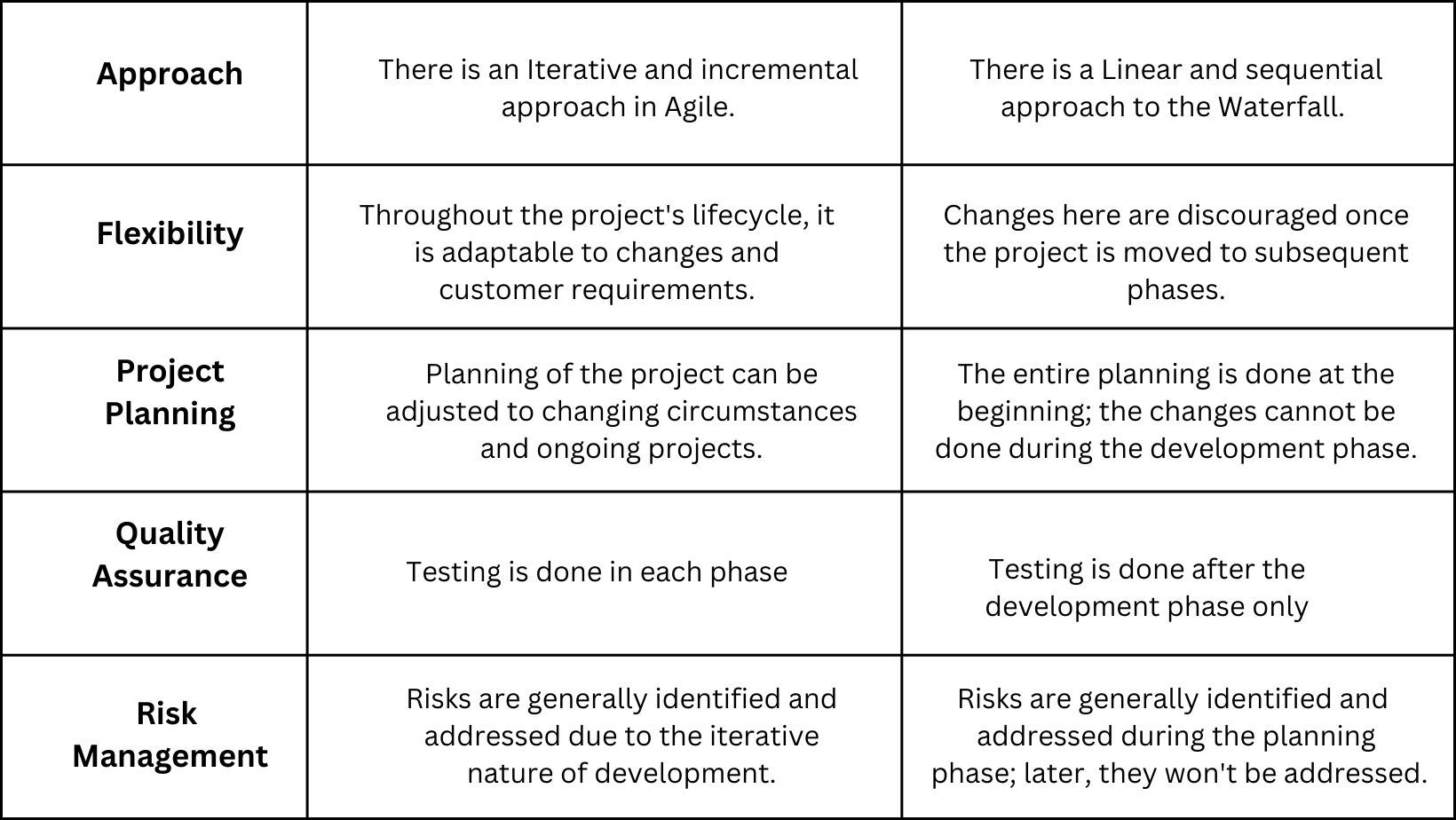
Agile vs Waterfall: Select the Right Methodology for Your Project
Navigating the ever-changing landscape of project management, Agile and waterfall methodologies have tremendously served in project success. Both approaches have been different toward project success, where one emphasizes adaptability and collaboration, while the other is dependent on structured progression and predictability.
As we move ahead to understand the in-depth techniques between Agile vs Waterfall methodologies, you will find advantages, disadvantages, and differences that will guide the project managers and stakeholders to make effective decisions.
What is Agile Methodology?
The Agile methodology encourages iterative approach in the software development process. In this waterfall methodology, there is development and testing procedures which is carried out simultaneously. This procedure improves communication among clients, developers, testers and project managers.
Advantages
Agile is highly flexible; changes can be made anytime during the project life cycle.
There is frequent interaction between customers and stakeholders, which makes a better understanding of project development.
Agile emphasizes delivering projects in a short period with effective work.
Agile allows us to make changes in the middle of the project if issues are identified.
Agile approaches to adaptive planning allow for making changes based on real-time feedback.
Disadvantages
The flexible nature of Agile can make it difficult to predict the cost and time of the project.
Agile often focuses more on working software than comprehensive documentation, which can lead to difficulty during extensive documentation.
Agile looks for continuous collaboration, which may require more resources, time, and effort from team members.
What is Waterfall Methodology?
The Waterfall Model technique is also know for Linear Sequential model. The reason why this methodology follows in a sequential order, so that the project team can move on to the next phase for development or testing if the previous step is successfully completed.
Advantages
Waterfall's structured approach allows us to estimate project timelines and costs.
Each phase of the Waterfall requires detailed documentation, which decreases the project's overall time.
Projects that are well-defined and won't require any changes later will suit Waterfall.
The linear approach of Waterfall allows the projects to break into different phases.
With less customer involvement, there is stability and less disruption in project development.
Disadvantages
The Waterfall is less flexible and does not allow make any changing later; this can be difficult in large projects.
The stakeholders can't see the project in the middle; this increases the risk of product success rate and even misunderstandings among the stakeholders.
The failure rate is higher if there is any misunderstanding or improper planning is done.
If Mistakes are made early, or in the middle phase, they become very difficult to change and more costly.
As it is sequential in nature, this lead to delays in providing tangible results in the final phase.
The Difference of Agile vs Waterfall Methodology

Agile vs Waterfall Summary
In the overall comparisons, choosing the appropriate methodology between Agile vs Waterfall deeps on the nature of the projects, the organization's culture, the selection of the development team, and other requirements. You can decide which methodology best suits your project goal by looking at the requirements.
Moreover, if we compare both of these methodologies, the Agile methodology is preferred by various industries. Still, if you need clarification with selection, connect to the best software consulting company and leverage the benefits from their services to develop software product development.
Appreciate the creator